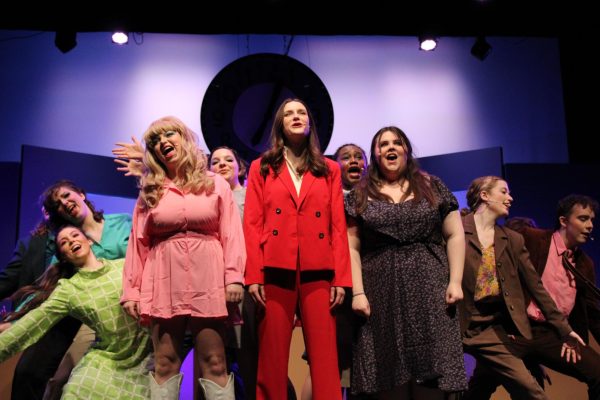Film fest showcases international environmentalism
On Saturday, Feb. 6, a sold-out crowd of 500 community members packed into the Cleveland Museum of Natural History (CMNH) to celebrate the natural environment and shed light on the challenges it faces. The 14th Wild & Scenic Film Festival is currently touring the United States and stopped in Cleveland for a shortened version of the regular event.
The primary festival features over 100 films over the course of three days. Only 15 of these films were selected to provide a more tailored experience for the Northeast Ohio audience. The film festival started in 2003 by the South Yuba River Citizens League (SYRCL, pronounced “circle”), an environmental advocacy group based out of Northern California. After several battles against proposed dams, the festival’s name celebrates the achievement of Wild & Scenic status on 39 miles of the South Yuba River in 1999.
In addition to the actual films, the museum held an enviro-fair that showcased several local environmental groups. The groups included the Cleveland Botanical Garden, the Nature Center at Shaker Lakes, the Earth Day Coalition, Cuyahoga Valley National Park, Slow Roll Cleveland and the Cleveland Vegan Society. A majority of the conversations at the fair revolved around passion for preserving the environment and educating the public about these issues. A representative of the Nature Center at Shaker Lakes discussed how vital it is to educate children at a young age to foster a culture of environmental protection.
Although it might be hard to believe that Cleveland, a city well known for a flaming river, could have the capacity for protecting the environment, Manager of Public Programs at CMNH Mary Rouse assured otherwise. “Everyone is aware that [Cleveland] is really undergoing this renaissance and we are becoming the place to be,” said Rouse.
While the Wild & Scenic Film Festival is traveling the country, it is significant that they chose to stop in Cleveland. “[The film festival] is looking to find a partner in the city that’s interested in environmental conservations, it’s a great fit for us,” said Rouse.
The Murch Auditorium was filled to capacity as the films started. The movies varied in length, ranging from a few minutes to over a half-hour long. There was a definite emphasis on the global environment as the films featured the wildlife recovery of Namibia, a small town in New York that resisted fracking and the preservation of the Fijian Highlands.
The festival did not treat its subject with strict seriousness, as “Spaceship Earth Passenger Safety Briefing” was full of quick wit and laughs and “Bounce, this is not a freestyle movie” felt more like an uplifting viral video than a call for environmental protection.
The films were made with great care and attention to detail. “Monarchs & Milkweed,” produced for Yosemite National Park, took viewers closer to the activity and ecosystem of the Monarch butterfly and transformed mundane moments of beetles and caterpillars into beautiful scenes filled with life. The most heartfelt film was “An Education, A Father-Daughter Trip of Discovery,” which featured a National Geographic Explorer who took his 11-year-old daughter on her first skiing expedition to Antarctica. The film also resonates the importance of early education with regard to environmental issues.
“It’s an important message to get out there. Some of this is cutting edge science, things you’re not going to see on TV or even in a regular movie theatre,” said Rouse.
Harvey Webster, CMNH director of wildlife, said the films “are all remarkable in their own way.”
After attending the film festival, it became clear how passionate citizens in the community are about environmental protection and activism. The event was a great opportunity to see local groups and talk to them about how they’re contributing to the fight. The films themselves showcased the beauty of nature to inspire audience members to take action.















